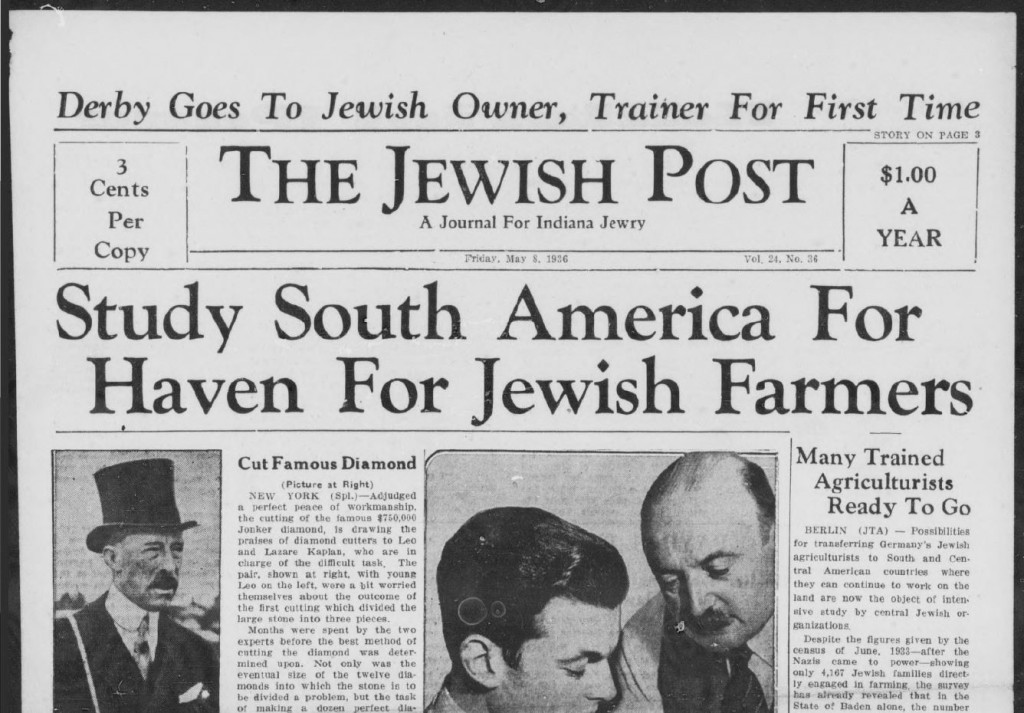
Hoosier State Chronicles has just uploaded over 3,500 issues of The Jewish Post, a historic weekly (now biweekly) published Indianapolis since 1933. Here’s a bit of the paper’s history — and of Jewish journalism in the Midwest.
While the center of American Jewish culture has always been identified as New York, the Ohio Valley saw the birth of one of the first Jewish-run periodicals in the U.S. This was Cincinnati’s The Israelite.
Founded in July 1854, and today printed under the title The American Israelite, this paper is the oldest surviving Jewish news organ in the country. After the London Jewish Chronicle, begun in 1841, it is the second oldest in the world. Cincinnati’s The Israelite was the brain child of pioneer Austrian rabbi Dr. Isaac Mayer Wise (1819-1900), who was also one of the founders of Hebrew Union College, the oldest Jewish seminary in the Americas. During World War II, HUC attracted one of the great Jewish theologians and Civil Rights leaders, Abraham Joshua Heschel, who called the Midwest home for a few years while serving on the school’s faculty.
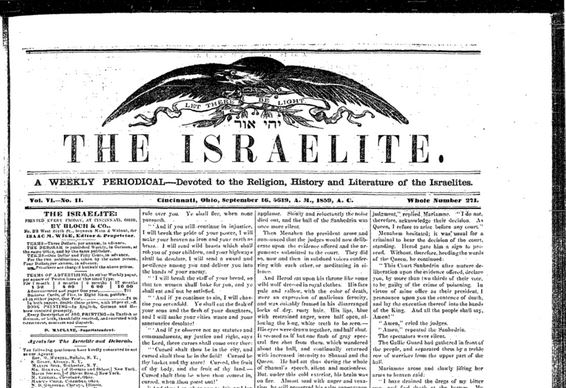
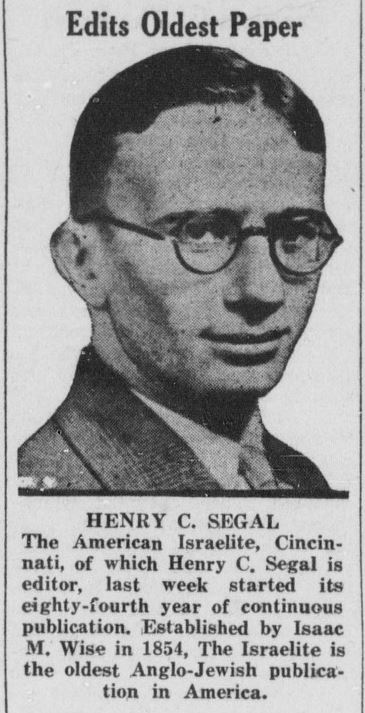
Before 1900, small towns in the Midwest and South were often home to much larger Jewish communities than today. Even seemingly far-flung rural places like Woodville, Mississippi; Muskogee, Oklahoma; and Harlan, Kentucky, had sizable Jewish populations. With the plantation economy of the South closely tied to the shipment of products up and down the rivers between New Orleans and the Midwest, Jewish merchants settled all over the Mississippi and Ohio valleys. Though most Jews later left for opportunities in cities, the Institute of Southern Jewish Life has documented the fascinating history of Jews in small-town America.
Some settled in Indiana. One of the first European Jews to come here was Louis (Ludwig) Dembitz, an immigrant from Prussian Poland who practiced law in the thriving river town of Madison, Indiana, around 1850. When the great Hungarian revolutionary Lajos Kossuth visited Madison in 1852, Dembitz translated his speech (given in German). He later edited a German-language newspaper in Louisville, the Beobachter am Ohio. Louis Dembitz was also the uncle of Louis D. Brandeis, the first Jew to serve on the Supreme Court. Brandeis, who died in 1941, changed his middle name from David to Dembitz to honor him. In 1855, the judge’s parents were married at a now-defunct synagogue in Madison, Indiana.
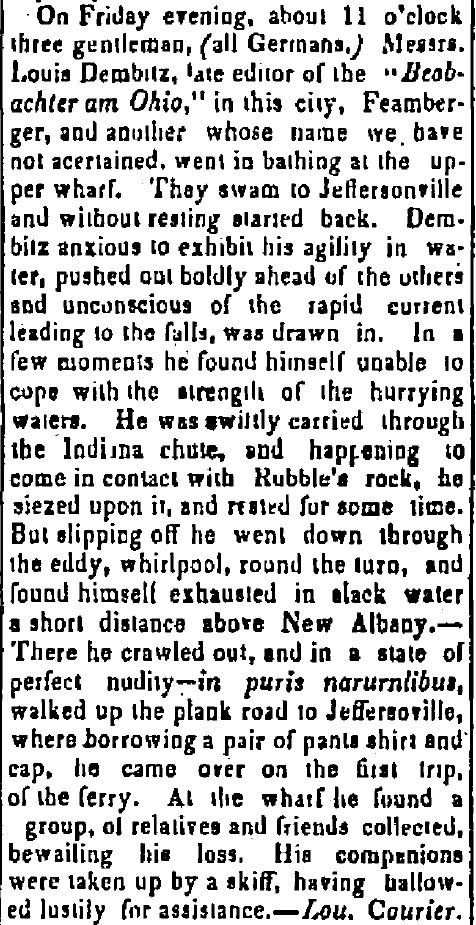
Even tiny towns like Ligonier in Noble County occasionally had small Jewish populations early on in their history. One of the first Jews in the Wabash Valley was the Vincennes trader Samuel Judah (1798-1869). Descended from a family of Spanish Jews who moved to Canada and New York, Judah bought land in Terre Haute in the 1820s and went into politics. In 1840-41, he served as Speaker of the Indiana House of Representatives.
Before Chicago grew into a huge metropolis after the Civil War and before trains eclipsed river traffic, life in the Midwest was largely focused on the Ohio Valley. Indianapolis’ Jewish Post, in fact, began in Louisville, Kentucky, in 1930.
Expanded and printed in several different state editions, this paper was created by long-time owner and editor Gabriel Murrel Cohen (1908-2007). Born in Louisville, Cohen earned a Bachelor’s at the University of North Carolina at Chapel Hill in 1930 — the same year he went home to Kentucky to start The Jewish Post at age 22. Though Cohen moved his editorial offices moved to Indianapolis in 1935, he kept a printing office in Louisville into the 1940s and often carried ads for businesses in “Falls City.”
Advertised as “A Journal for Indiana Jewry,” in fact for years this was really a bi-state paper.
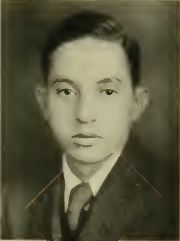
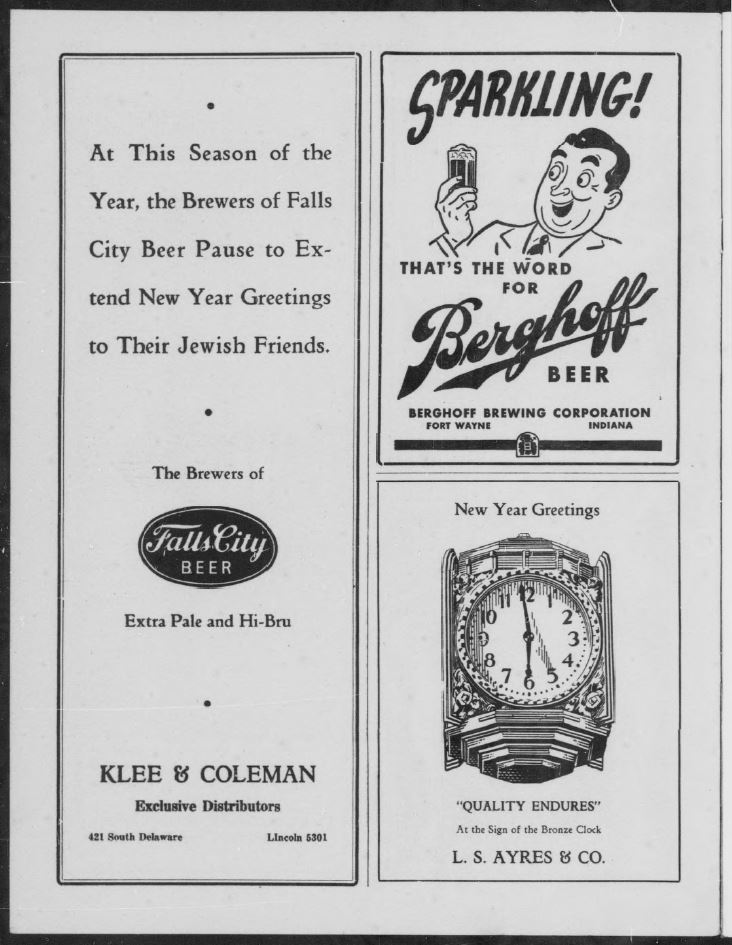
The year 1933 was a momentous one for beginning a Jewish newspaper in the Midwest. The state had only recently been freed up from the grip of the powerful Ku Klux Klan, which dominated Hoosier politics until about 1927. In a battle spearheaded by newspapers like the Indianapolis Times — which urged Hoosiers to remember that “Indiana is not Russia” — the Klan had just fallen from power when the first issue of The Jewish Post came out. A decade earlier, the KKK’s mouthpiece, The Fiery Cross, was printed in the Century Building, under the editorship of Grand Dragon D.C. Stephenson — a professional anti-Semite, anti-Catholic, racist, and one of the most powerful men in America. A mainstream organization in the Twenties, the KKK touted “100% Americanism,” Protestantism, anti-immigrant attitudes, and female purity, as well as the federal prohibition of alcohol.
Franklin Roosevelt repealed Prohibition in 1933, the year The Jewish Post was first printed under the editorship of Leonard Rothschild. In late 1935, Gabriel Cohen’s Spokesman Company bought Rothschild out. Originally based at 505 West Washington Street, the editorial offices briefly moved to the East Side by 1936, when Cohen was based at 2101 East Washington Street in a building that later housed the dingy California Nite Club. Cohen and his staff were back downtown in 1937, operating in the Majestic Building and Meridian Life Building.
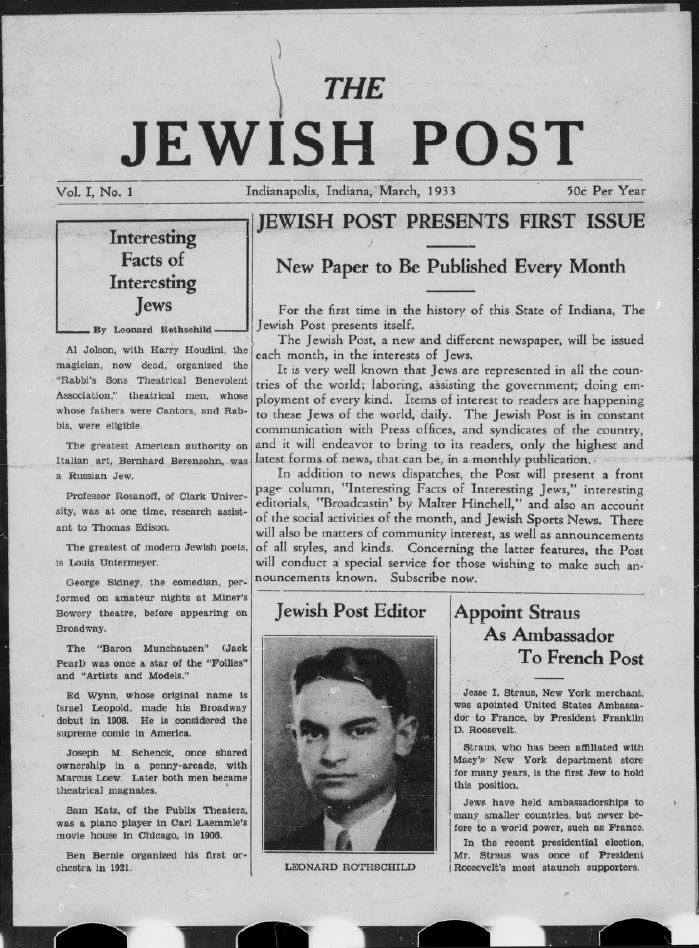
While the new 4-page paper carried local news of Jewish interest from Indiana, Kentucky and the U.S., during the 1930s and 1940s its front pages focused on the rise of Nazism in Germany and the plight of European Jews.
Yet The Jewish Post didn’t only announce the perils of anti-Semitism overseas and at home. The paper also affirmed Jewish identity in Indianapolis and helped Hoosiers get to know themselves and their neighbors better.
A regular feature in early issues of The Jewish Post was a series of biographies of prominent — and promising — Indiana Jews. The paper typically ran these profiles ran every week. One focused on Ed Rose, a 20-year-old staff writer on the Indiana Daily Student at IU-Bloomington, in July 1937.

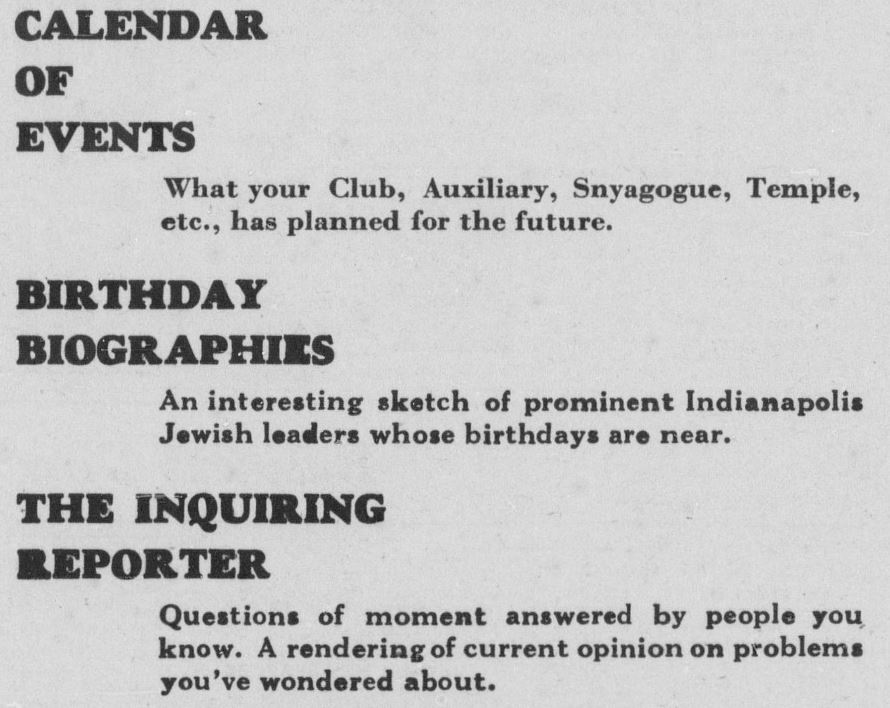
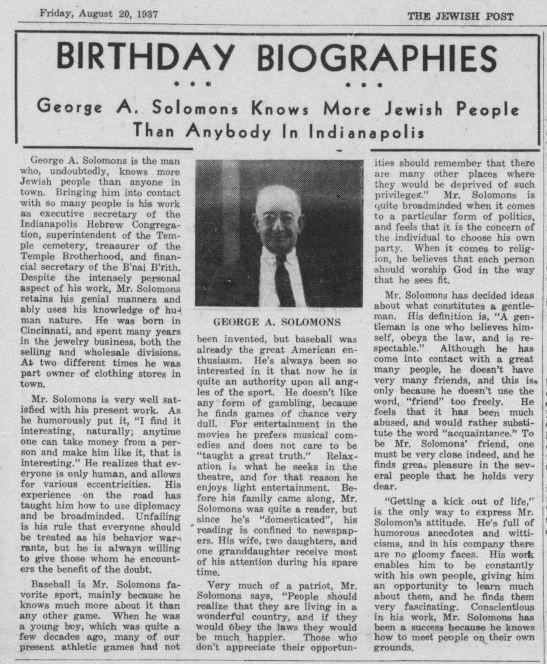
In 1937, Gabriel Cohen also serialized “A History of the Jews of Indianapolis” by Harry Dale, a story that begins in 1856, when fourteen men began looking for a site for a Jewish cemetery. Split between several local congregations, these officially separate burial grounds are known colloquially as “Kelly Street” and located just off South Meridian in a part of the Old Southside that was once heavily German, with some Hungarian, Polish, Russian and Greek households among them.
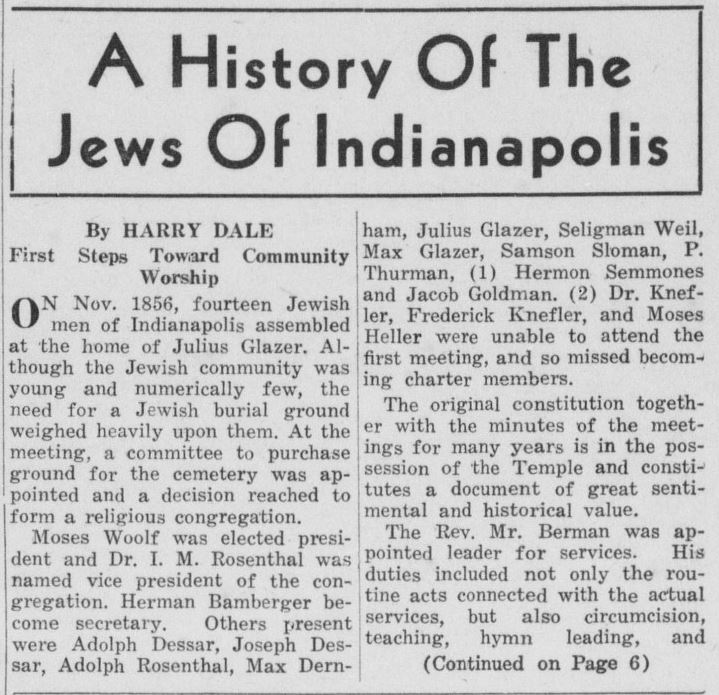
Gabriel Cohen’s Jewish Post also gave attention to the development of Zionism, the effort to set up a homeland for Jews. After World War II, that place turned out to be Israel, but Zionists once considered spots as far away as Saskatchewan and South America, as well.
Over the years, The Jewish Post took up the cause of interfaith unity. In its early days, it also covered the concern loss of Jewish identity in the face not just of the Holocaust, but of Americanization. Cohen’s paper ran occasional articles that document both the evolution of American Jewish identity and the struggle of Jews to stay true to their historic roots.
One interesting example came with the extremely rare production of a Yiddish play in Indianapolis. In March 1934, Maurice Schwartz, father of the “Golden Age of Yiddish Theater,” performed on stage at English’s on Monument Circle downtown. Schwartz was a Ukrainian-born actor raised on Manhattan’s Lower East Side. In 1918, he founded the Yiddish Art Theatre At English’s Theater, Schwartz played a lead role in the Yoshe Kalb, which told the story of a Hasidic mystic. Before Schwartz’s death in 1960, he went on to work with a struggling young Jewish actor named Leonard Nimoy, who came from a Ukrainian Jewish family in Boston spoke Yiddish fluently. The man who played Star Trek’s Mr. Spock remembered Schwartz as his “theatrical father.”
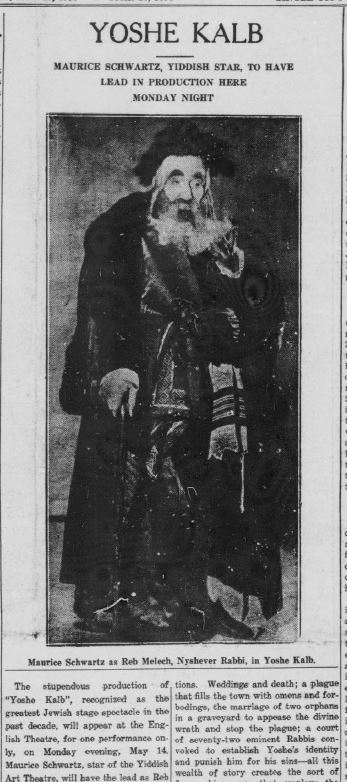
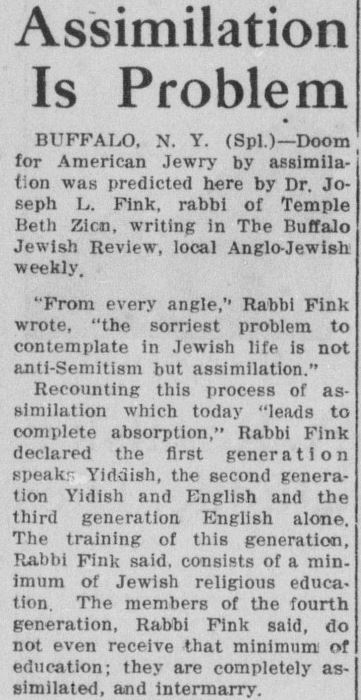
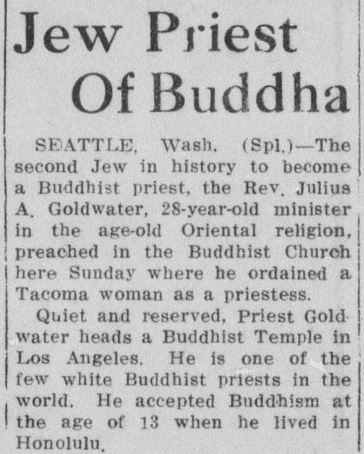
Indianapolis didn’t have the only Jewish newspaper in the Midwest in those years. An even earlier paper, Chicago’s The Sentinel, dated back to 1911. In 1921, Milwaukee saw the birth of the Wisconsin Jewish Chronicle (digitized on Newspapers.com). The Ohio Jewish Chronicle began in Columbus in 1922, followed by the Detroit Jewish News in 1942 and the St. Louis Jewish Light in 1947.
In 1948, Gabriel Cohen expanded his paper nationally. In addition to the original Indiana edition, he ran a special Missouri edition from 1948 until 1992. Along with its Indiana edition, the National Jewish Post & Opinion is still in print today.
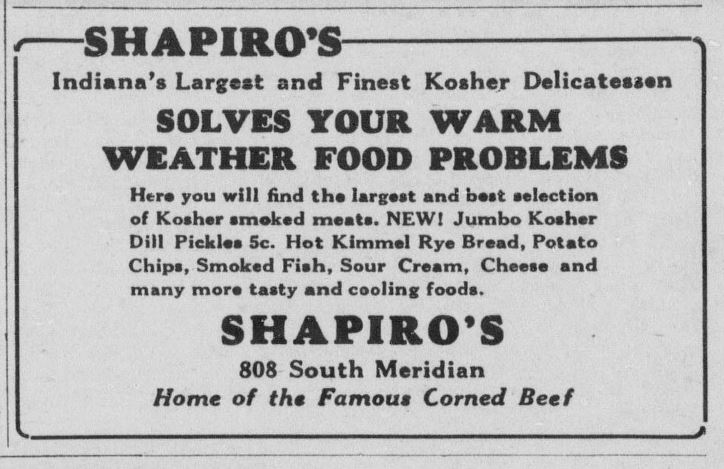
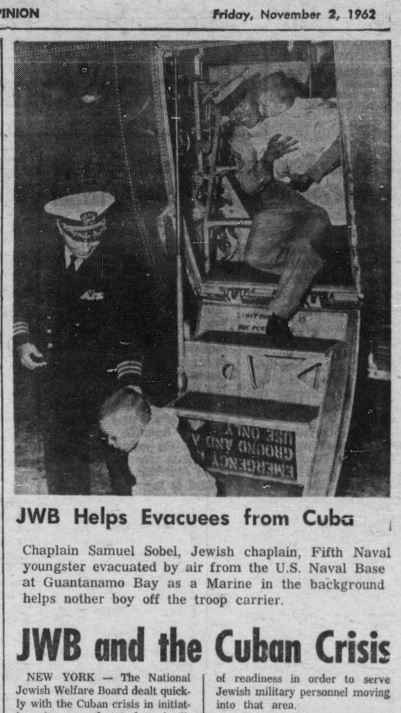
Based on West 86th Street in Indianapolis, the newspaper is now a biweekly. In addition to its longstanding commitment to interfaith dialogue, The Jewish Post & Opinion defines its mission as “To support Israel and to fight anti-Semitism. To heal and repair the world (tikkun olam). To protect, promote, and preserve time-honored Jewish values such as ‘Love your neighbor as yourself.'”
In cooperation with IUPUI’s Center for Digital Scholarship and the staff of The Jewish Post & Opinion, Hoosier State Chronicles has brought 73 years of this historic journal’s Indiana edition online — from the very first issue in 1933 all the way up through 2005.

